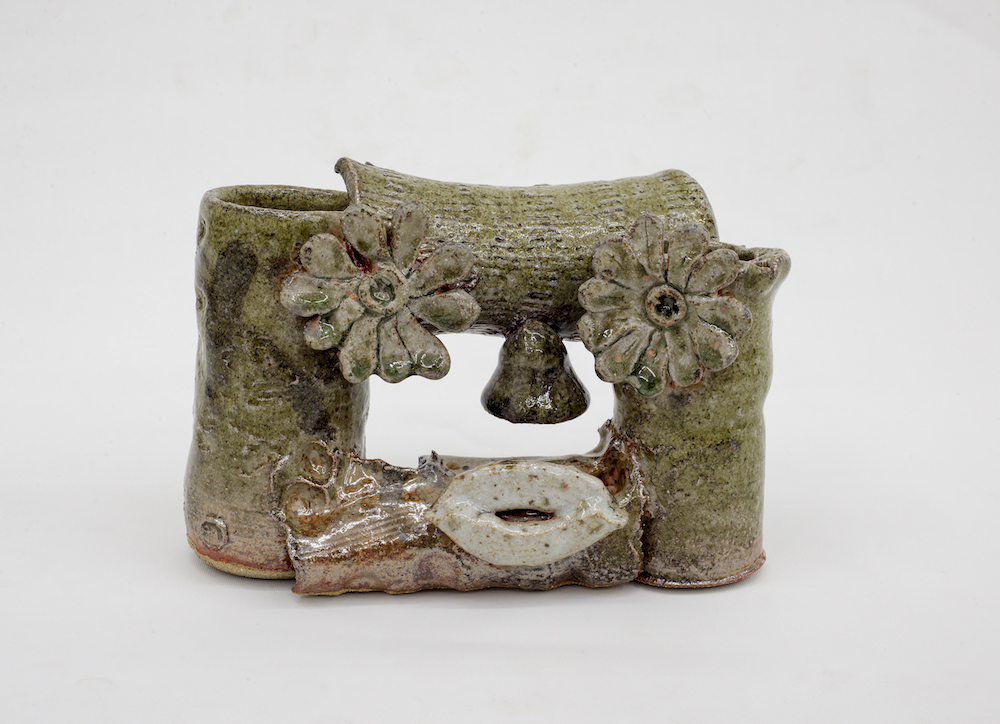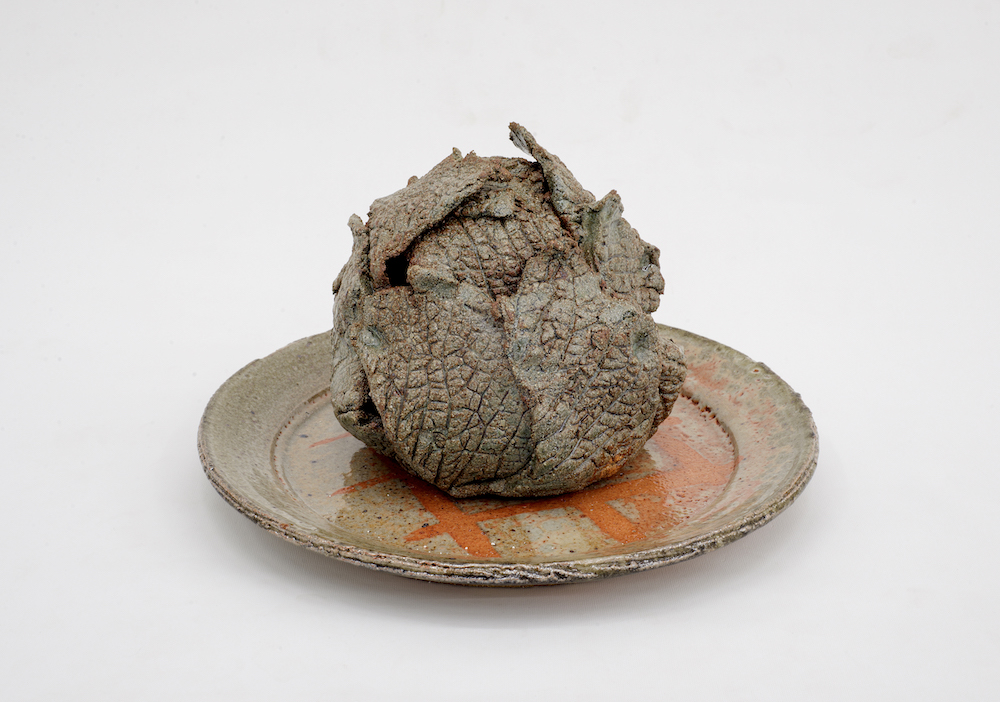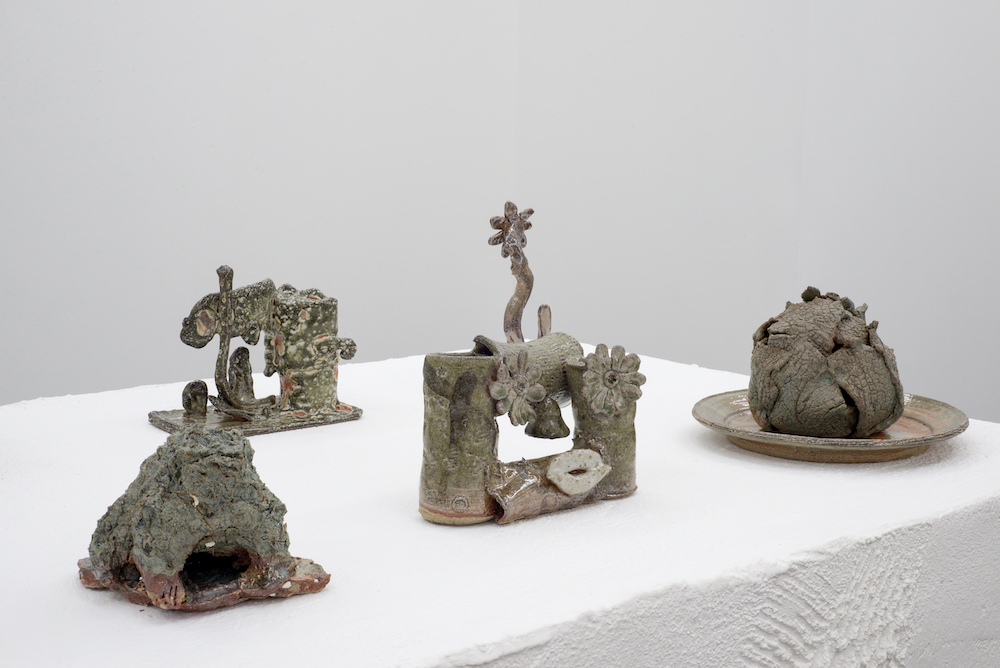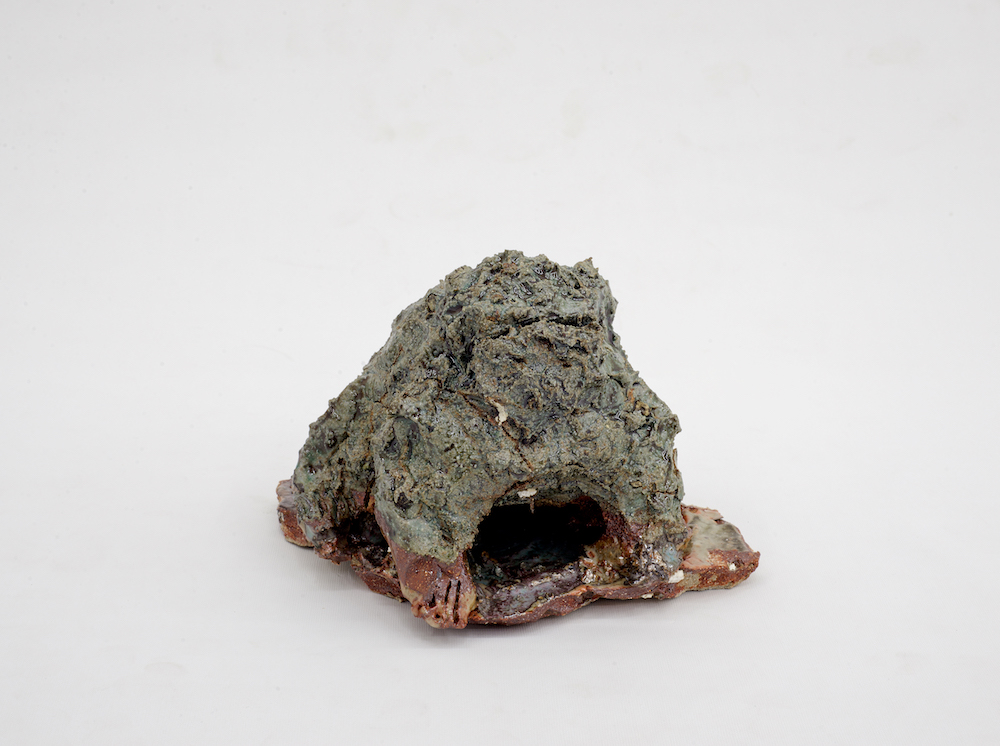
Aaron Angell‘s sculptures mix traditional techniques with a contemporary sense of humour—in a recent show at Glasgow’s Koppe Astner gallery he formed cabbages, “toads” and other everyday items and creatures using reduced stoneware and granite chips with lashings of Shino glaze. The pieces appear both serious (referencing the history of sculpture) and incredibly light, with human-like character bestowed on his lumpy, earthy items. One item, Plan for Sewer Gas Lamp, appears to gaze at the viewer with big flower eyes and full lips. The toad meanwhile is missing many discernable features, and is little more than a mass of reduced stoneware and granite chips, covered in Shino and copper glazes—but the little form that it does have it utterly toad-like in its posture. This week, the British artist can be found at Liste art fair in Basel, where he is showing at Koppe Astner’s booth alongside Dickon Drury and Josh Faught.

Can you tell me a little about the work that you showed in More Sculpture about Dogs and Shadows at Koppe Astner earlier this year?
It’s just nine small-ish new sculptures, all from one firing. They were made very directly—I had another show in Glasgow at the same time, at GoMA, which was a much more cerebral operation, and had a lot of elements which were unfamiliar to me in their making. This show of sculpture at Koppe Astner was familiar ground for me and was much more fun to make. The next show was at Kunstverein Freiburg and included larger ceramics (I don’t like working large but I am happy with these) and glass paintings.
Your reference points are diverse in this particular body of work, which takes inspiration from cranes, cathedrals and John the Baptist. Where do you begin to source these things?
I am obsessed with visual and poetic research and these works are good examples of things arising unscientifically from this compost of imagery.

There’s a subtle humour in your pieces, although the pieces don’t feel as though their success hinges on that. Is it something you think about when making work?
I don’t like formal painting, I definitely don’t like formal pottery. Art should carry humour, or spirit at least. I’m interested in the headspace of “being serious about being funny”.
These pieces take some inspiration from Japanese Iga ware—how did you come across this technique and how have you made it your own?
Momoyama ceramics and Iga / Shigaraki wares in particular are some of the earliest achievements of this joyful, ironic spirit in art, with great craft too. You have to have great craft to make such lazy looking objects. Iga ware is anagama (wood) fired—I only have a gas kiln at the moment but I am hoping to build a wood fired kiln in the next few years.
- More Sculpture about Dogs and Shadows, 2018
- Toad, 2018
You created a limited edition print for the exhibition in collaboration with a poet, Lucy Mercer…
Lucy is careful about where she publishes but we have collaborated a few times for which I am grateful. She is one of the best poets living today and I can’t write.







